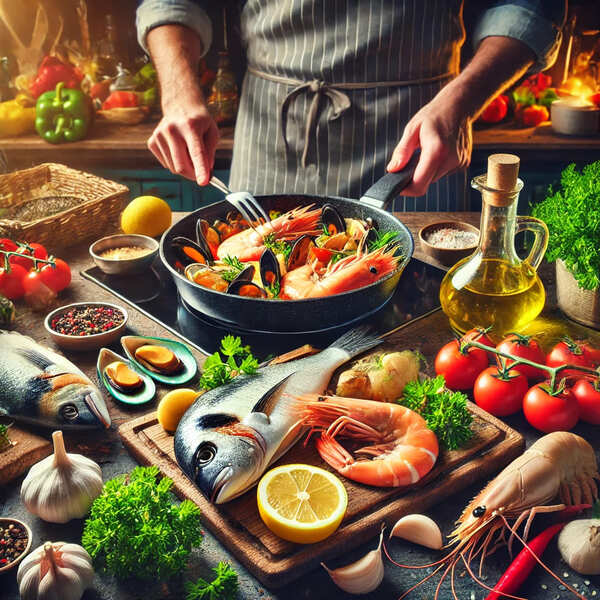Chamberlains of London – Seafood is a favorite ingredient in many cuisines around the world due to its rich flavors and high nutritional value. However to cook seafood requires precision and care to maintain its freshness, texture, and taste. Improper cooking techniques can lead to a loss of flavor and an unpleasant texture. Here are some essential tips to ensure your seafood dishes remain fresh and delicious.
1. Cook Fresh Seafood Immediately
The key to retaining the natural flavor and quality of seafood lies in cooking it as soon as possible after purchase. Ideally, seafood should be prepared on the same day it is bought.
- Why It Matters: Fresh seafood has a delicate texture and flavor that diminishes with time. Keeping it for extended periods, even in refrigeration, can lead to a decline in quality. If you must store seafood, ensure it is kept in the coldest part of the refrigerator or on ice to maintain its freshness for a short period.
- Pro Tip: When buying live seafood, such as crabs or lobsters, keep them alive until just before cooking for the best results.
2. Avoid Overcooking


Seafood cooks quickly, and overcooking can ruin its natural sweetness and tender texture.
- Timing Is Key: Whether you’re grilling, boiling, or frying, cooking times for seafood are generally short. For example, shrimp only need 2–3 minutes to cook, while fish fillets usually require 5–7 minutes, depending on thickness. The goal is to achieve a tender and moist interior while ensuring it’s fully cooked.
- Signs of Doneness: Properly cooked seafood should be opaque and easily flake with a fork. Shellfish like clams and mussels are done when their shells open during cooking.
- Pro Tip: Use a meat thermometer for precision. For most seafood, an internal temperature of 145°F (63°C) indicates it is cooked.
3. Use High Heat for Quick Cooking
Seafood responds well to high heat, which locks in moisture and enhances flavor.
- Why High Heat Works: Cooking seafood at high temperatures—whether by searing, grilling, or broiling—creates a crispy exterior while preserving the tender interior. This method is particularly effective for fish steaks, scallops, and shrimp.
- Techniques to Try: Sear fish fillets in a hot skillet for a golden crust, or grill prawns for a smoky flavor. Ensure your cooking equipment is preheated to prevent sticking and to achieve even cooking.
4. Enhance Flavor with Sauces and Seasonings


While seafood has a natural sweetness, adding sauces and spices can elevate its flavor profile.
- Popular Sauces: Some of the best pairings include garlic butter sauce, lemon dill sauce, or spicy chili sauce. These complement the seafood without overpowering its natural taste.
- Seasoning Tips: Simple seasonings like salt, pepper, and fresh herbs can bring out the best in seafood. For a bold flavor, marinate cook seafood with a mixture of olive oil, lemon juice, garlic, and your favorite spices.
- Pro Tip: Brush seafood with a light glaze, such as honey or soy sauce, during grilling or broiling for a caramelized finish.
5. Don’t Forget Presentation
Seafood not only tastes great but also makes for a visually appealing dish when plated well.
- Garnishing Ideas: Add a touch of color to your seafood dishes with garnishes like lemon wedges, fresh parsley, or colorful vegetables. These elements enhance both the flavor and presentation.
- Serving Suggestions: Serve seafood with side dishes like steamed rice, roasted vegetables, or a crisp green salad for a balanced meal.
Cooking seafood correctly is about more than just taste it’s also essential for food safety. Proper preparation eliminates harmful bacteria and ensures the dish is safe to eat. Additionally, the right cooking techniques preserve the nutrients in seafood, making it a healthy choice for your diet. Whether you’re a seasoned chef or a home cook, these techniques will ensure your seafood dishes always impress.

